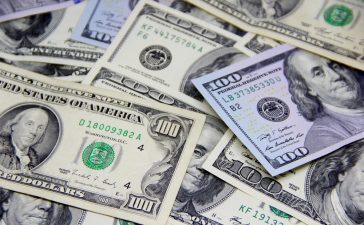The U.S. dollar index eased 0.12% to 111.41, eating into some of the 0.79% gains it made on Monday
The U.S. dollar eased back on Tuesday from a one-week top against a basket of major peers, as traders weighed what kind of message Federal Reserve officials will deliver at Wednesday’s monetary policy meeting.
The risk-sensitive Australian and New Zealand dollars rose from one-week lows amid a broad lift in market sentiment, even as a Reserve Bank of Australia policy decision loomed.
It’s certainly a risk-on day, and that’s being reflected in currencies with the Aussie and the kiwi topping the leaderboard, but all within recent ranges, said Rodrigo Catril, a currency strategist at National Australia Bank.
Our general sense is that the dollar probably has peaked, but that doesn’t necessarily mean it’s coming down, Catril said.
The U.S. dollar index – which measures the greenback against six rivals including the euro, sterling and yen – eased 0.12% to 111.41, eating into some of the 0.79% gains it made on Monday.
The index has fluctuated widely around the 112 level since its retreat from a two-decade high of 114.78 at the end of September.
The safe-haven greenback got some support from overnight losses on Wall Street, but a rise in U.S. stock futures and firmness in Asian stocks, led by China, scuppered that demand on Tuesday. Lower long-term U.S. Treasury yields also removed a crutch for dollar strength.
The Fed is widely expected to raise its benchmark overnight interest rate by 75 bps on Wednesday, its fourth such increase in a row. But for the December meeting, Fed funds futures are split on the odds of a 75- or 50-bps increase.
For the RBA, another 25 basis point hike is fully priced for 0330 GMT, but markets also lay better than 1-in-4 odds for a half point increase.
The Aussie rallied 0.55% to $0.6432, while New Zealand’s kiwi gained 0.58% to $0.5848.
The euro added 0.21% to $0.99005.




